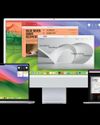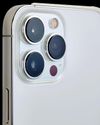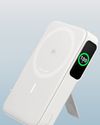
The difference between an ordinary pencil and an Apple Pencil is pretty clear. The former is for writing, drawing and shading on paper; the latter, for writing, drawing and shading on iPads. The Apple Pencil may look a lot like a normal pencil but there’s a lot of technology crammed into its compact case. Which is just as well, as it costs quite a bit more than a normal pencil does.
The first-generation Apple Pencil was launched in 2015 and is still on sale; the second generation launched in late 2018. If you’re buying one, it’s important to know that not all iPads support the first-generation or any generation. See below to check what works with what. The short version is that if your iPad has a USB-C connector, it only supports the second-generation Pencil.
Although there are important differences between the two generations of Apple Pencil, they work in the same way. The Apple Pencil contains an ultra-low-power ARM-based microcontroller with 64MB of flash memory, a 0.329Wh rechargeable lithium-ion battery, a Bluetooth module to connect to your iPad wirelessly and a three-axis accelerometer to detect motion and velocity.
The tip of the pencil is made from a hard capacitive plastic. Capacitive means it conducts electricity, just like your fingers do, which is important: if the tip wasn’t capacitive, your iPad wouldn’t be able to detect the pencil at all. It’s a softer plastic than the rest of the Apple Pencil, so it wears away over time – albeit over a very long time.
This story is from the September 2021 edition of MacFormat UK.
Start your 7-day Magzter GOLD free trial to access thousands of curated premium stories, and 8,500+ magazines and newspapers.
Already a subscriber ? Sign In
This story is from the September 2021 edition of MacFormat UK.
Start your 7-day Magzter GOLD free trial to access thousands of curated premium stories, and 8,500+ magazines and newspapers.
Already a subscriber? Sign In

FAST FIXES FOR YOUR MAC
Having trouble with your Mac? This expert guide will equip you with the know-how you need to get it running smoothly again

Become an expert iPhone filmographer
Turn your clips into a slick movie with our collection of pro shooting and editing tips

Uncle Sam vs Apple
Regulators around the world are coming for Apple. We take a look at the challenges it faces

Anker MagGo Wireless Charging Station
Stick this in your bag if you're off out...

Apple will let you download iOS apps from third-party websites
The sideloading saga continues apace for Apple

ACDSee Photo Studio 10
Organise, edit and share your shots

Anker A1564 MagGo Power Bank (10K)
A pocket-sized portable charger for when you need it most

Logitech MX Brio
A champion of webcams in the darkness

1More Penta Driver P50
Who needs wireless earbuds when you can have these?

LaCie Rugged Mini SSD
Rugged external SSD storage